The rise of rapid delivery has been so fast it is still yet to decide on a name. ‘Ultra-fast’, ‘quick commerce’, ‘q-commerce’ and ‘instant needs’ are all in the mix, but this young sector’s dynamism goes far beyond just semantics
In little more than a year, the rapid delivery sector has raised billions of dollars in investment, seen established disruptors like Deliveroo playing catch-up, and caught the eye of the UK’s biggest supermarket.
It’s a sector that’s already carved out a completely new channel, changed the face of convenience food, and quite possibly all of retail.
And if former Amazon executive Brittain Ladd is correct, this is just the beginning.
“Rapid delivery is going to have a significant impact on the entire retail industry, not just grocery,” he says. “The desire for speed on the part of consumers will continue to increase. It’s not a fad. It’s a trend that will transform not only retail but also logistics.”
So can rapid delivery’s astronomic rise continue? Is it really the disruptive force investors are betting it will be? And with consolidation already underway, how many of the companies led by those on this list will still be around by the end of 2022?
In numbers
7 million
Rapid grocery app downloads in Europe in Q3, 2021 (App Radar analysis)
$1bn
Money raised by Gopuff in a funding round this summer
35%
People in the UK who say delivery apps will bring an end to visits to the corner shop (InMobi survey)
1/3
Rapid delivery app users who are using them to replace weekly shops (InMobi IDA user survey)
The idea of rapid delivery in the UK – groceries delivered in 15 to 30 minutes – began with the launch of Fancy and Weezy in the summer of last year.
The two companies started out with single-digit million-pound investments and slowly expanded their network of dark stores and customer bases. Fancy targeted the student population while Weezy went for “health-conscious yet time-poor professionals and parents”.
The model worked for a while, but as they both soon learnt, it doesn’t always pay to be first. Since the start of 2021, bigger, richer companies intent on cornering the rapid convenience market have entered the fray – and Fancy and Weezy have now both been acquired.
These later arrivals came with much bigger budgets for new dark stores, marketing, customer acquisition and discounts. Indeed, a major factor for appearing in this power list is quite crude: their abilities to raise truckloads of cash.
Getir (which bought Weezy last month) arrived in the UK in January having raised $128m with an already-proven model refined in Turkey where it is the country’s most valuable startup. This year alone it raised in excess of $1bn.
Gorillas landed in London in March having raised $44m in Series A funding in December and this October raised an additional $1bn. And in November, US player Gopuff, fresh off the back of a $1bn fundraising round in the summer, officially arrived in 10 English cities after buying British-based rivals Fancy and Dija.
These nascent giants of the sector have helped drive the rapid delivery channel to be valued at £1.4bn in the UK, according to IGD, and now one in three British shoppers are either using or are interested in using rapid delivery services.
And the growth may not be over yet, for if all those who said they would try a rapid grocery service did so, the £1.4bn market could more than double.
“The growth is evident in the UK and also on a worldwide scale,” says Simon Mayhew, IGD head of online retail insight. “Players are fast becoming household names.”
It has been a dizzying ascent for a budding sector, but not everyone is convinced of the buzz. For some, rapid delivery is little more than a niche segment, a threat to certain corner shops in city centres, but no genuine challenge to the industry heavyweights.
Devan Hughes, CEO and co-founder of personal shopper app Buymie, says much of the excitement is based on a “naïve expectation” that rapid delivery businesses will reach the same levels of efficiency and scale as the country’s most established supermarkets.
While Covid lockdowns led to a huge “overheating” in online grocery and helped fuel the rise of rapid delivery, he says, this demand could quickly fall away. “Quite often consumer behaviour can change quickly and drastically alter the economics of an investment.”
So far at least, this has not happened. Zapp launched during the pandemic and has since received £72.5m in funding to aid its expansion. Steve O’Hear, Zapp’s VP of strategy, says that contrary to assumptions, sales have actually increased since Covid restrictions began to ease.
“People think we did really well in the pandemic but we’ve seen better, continued growth outside the pandemic,” he says.
Zapp is “steadfastly focused” on convenience where demand is typically driven by spontaneity and urgent needs, he says, so as “impulse socialising happens more and more that’s driven a lot of growth”.
Hughes does not doubt there is an opportunity for rapid delivery. His question really is about the “size of the prize”.
The investor frenzy of the past year was something of a “gold rush,” he explains, driven in large part by “fear of missing out” in what is typically a relatively underinvested market. So while venture capitalists typically ringfence follow-on capital for later investments, “it all got accelerated by this frenzy and ‘FOMO’ so all that capital got invested in a very short time”. Plus low interest rates and quantitative easing mean the market is flush with capital.
A consumer survey by InMobi found just 12% of UK city dwellers were ‘likely’ or ‘very likely’ to try an instant needs app and it’s too soon to say how many would use one regularly. That leaves serious questions about just how many players the market can sustain, Hughes suggests.
Julian Skelly, retail lead at Publicis Sapient, agrees. “The market is growing fast but the competitive space is exploding. It feels like there are too many entrants, with little real differentiation in their offerings.
“When the music stops on the current phase of introductory promotions, there likely won’t be enough chairs for everyone. Customers will stay with the companies that get the basics right and the others will sell up or disappear,” he says.
For now, businesses are clambering to raise awareness of the channel while simultaneously trying to win customer loyalty. Enormous amounts are being spent on marketing considering the youth of the brands. Many of the companies are sponsoring football teams, running national TV ads, and placing branding on cabs, buses and billboards across the country.
The feverish attention grab has meant customer stickiness is poor. They “follow the discount codes” says Hughes. According to InMobi research, consumer preference between the apps is still fairly evenly shared.
And just as in takeaway delivery, the market can only hold a couple of brands, he says.
More figures
$950m
Amount raised by Gorillas in latest funding round
75%
Proportion of people that would ditch rapid delivery brands for a similar service offered by a supermarket
10 mins
The minimum time between ordering and order arrival offered by rapid grocers
“Ultimately the UK market is only going to be able to sustain two of these ‘q-commerce’ players. Consolidation needs to happen to create economically positive companies, which today they’re not. Platforms of this nature need to be at one or two to be in a viable position,” he says.
It is likely stragglers will be acquired or exit, just as Deliveroo did in Spain and Germany after failing to break into the top two spots.
“By definition, the ultra-fast delivery market is hyper-local. This means there is a finite addressable market for each dark store and new entrants dilute this,” says Skelly.
So in a market that quickly gets saturated, once the initial period of market introduction is over, there will be a shake-up to a smaller, more sustainable competitor set,” Skelly adds.
Already, says Hughes, “fear is creeping in” among investors. “Investors who are ‘pot committed’ have to chase and follow those investments to make sure they aren’t the ones in an underfunded platform that will have to be sold,” he says.
The deal-making between immediacy brands is only just beginning. In the longer term, the market is akin to a “Mexican stand-off” says Jefferies equity analyst Giles Thorne. “The best capitalised operator is going to be the one left standing,” he says.
Who that will be is not yet known. It could be one of the leaders on this power list. But other rapid grocery players like Jokr and Buyk have yet to make a play in the UK.
Given the UK is what Hughes calls “the jewel in the crown of Europe from an online grocery point of view” they surely will. And Amazon, aside from its arms-length investment in Deliveroo and its rapid service Hop, is yet to show its hand in the space. Seemingly anything could happen.
A year from now
So will it still be possible to pick 10 rapid grocery power players this time next year?
Inevitably, as in any sector, businesses will come and go. As Fancy and Weezy have already shown, survival in this space is tough. But Brittain Ladd has no doubts that the sector as a whole large is here to stay.
In fact, one of the major outstanding questions is whether rapid delivery businesses can do enough to alter customer expectations for the long term.
Ladd believes that just like Amazon effectively turned next-day delivery from an unnecessary gratuity into a minimum industry standard , rapid delivery will do the same for groceries delivered inside 15 minutes.
“Business is driven by consumer behaviour. One consumer behaviour having a massive impact on business is the desire for instant gratification. The ‘need for speed’ is growing in importance to consumers,” he says.
Rapid grocery’s impact is therefore going to be huge, he continues, arguing supermarkets, restaurant delivery companies and convenience stores must now think about entering the market in a serious way.
“The time has passed for trying to tiptoe into rapid grocery delivery,” according to Ladd. “Far too many retailers continue to think small about it when they should be thinking big.”
Expect “big moves” and “wild cards”, he adds. Fittingly for this sector, it is sure to happen fast. “As for the naysayers and experts? They’ll be proven wrong.”
Topics
The 10 most powerful people in rapid delivery and q-commerce
- 1
- 2
 Currently reading
Currently readingLive fast, die young? 12 statistics hinting at the fate of the UK's rapid grocers









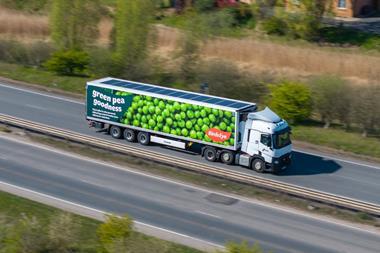
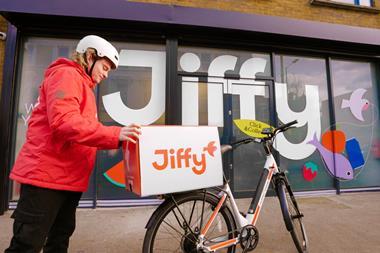
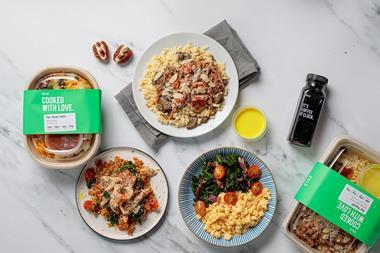
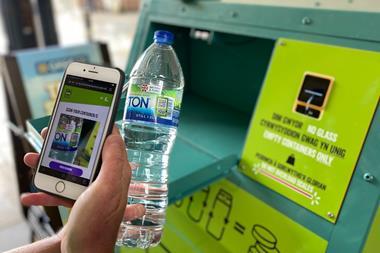

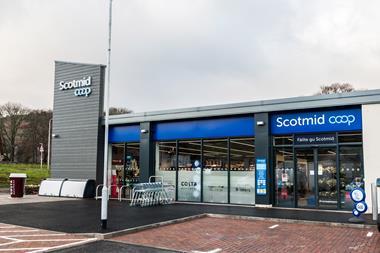






No comments yet